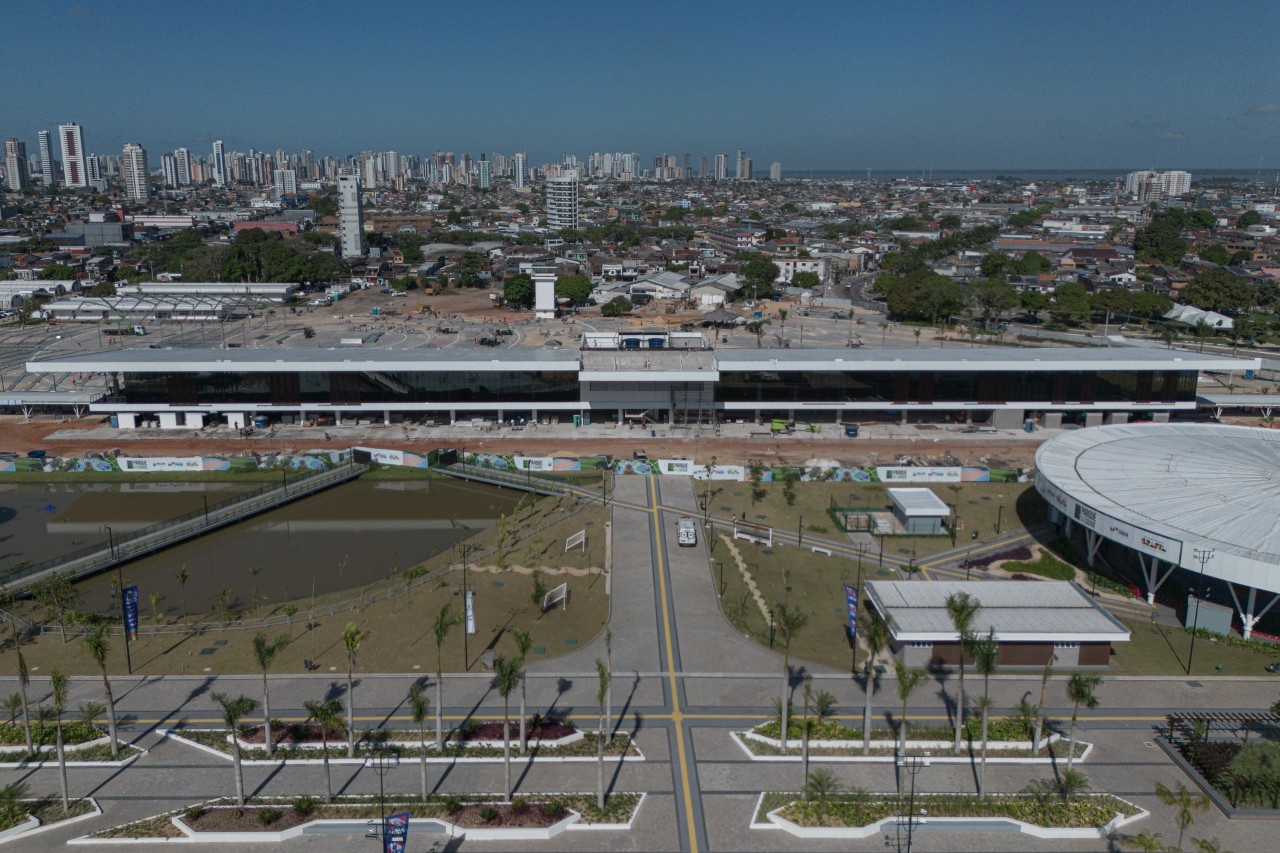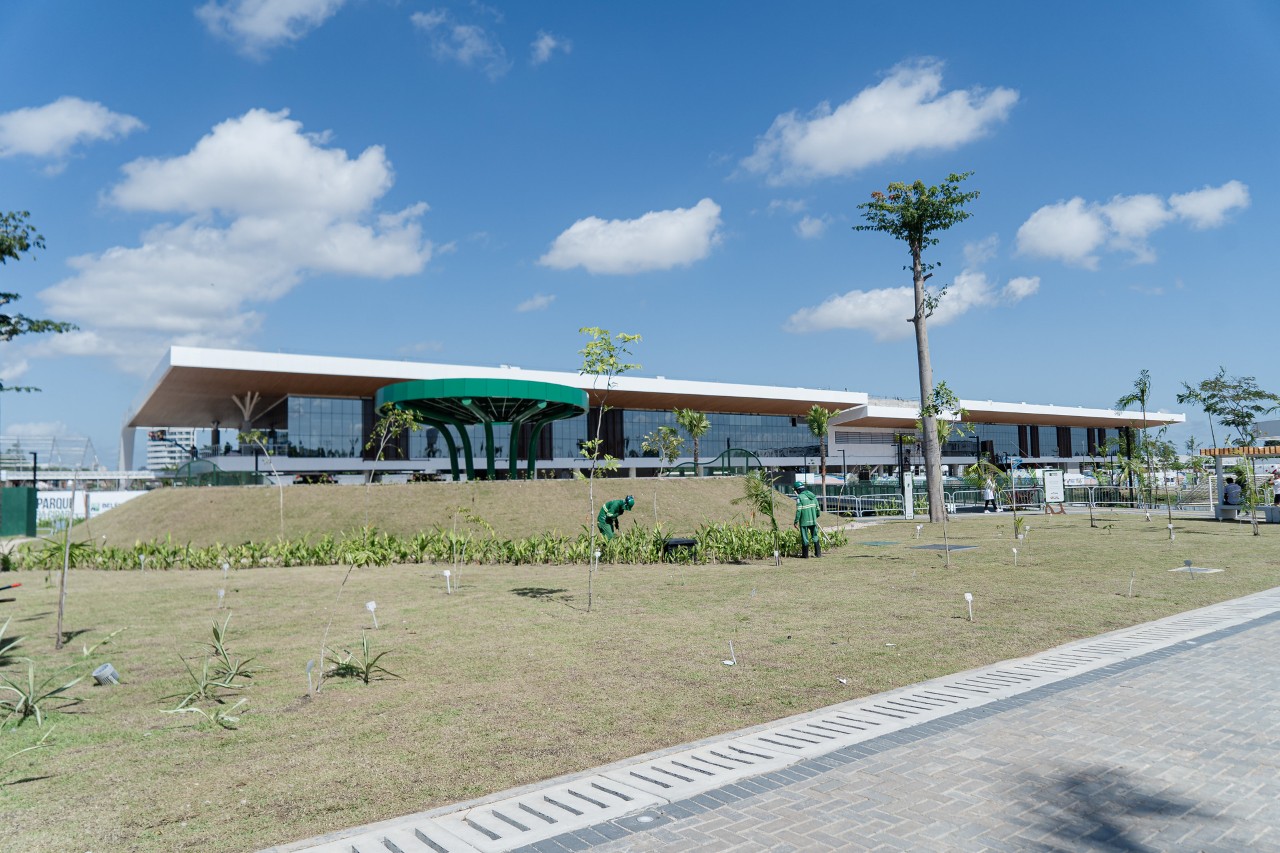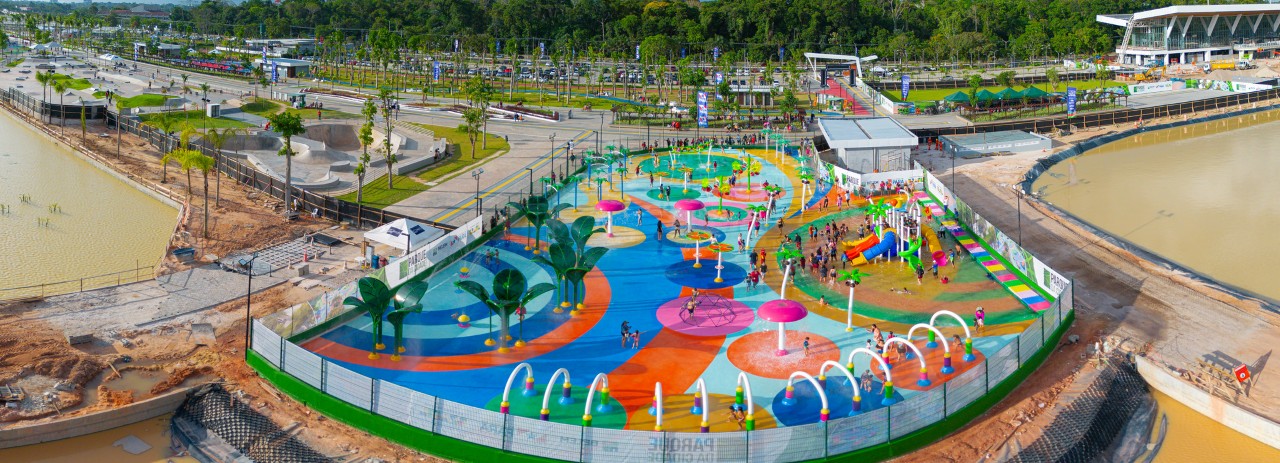The COP30 Green Zone will be open to the public—no accreditation will be required
An interactive cultural space displaying the climate agenda and offering attractions for all ages, free of charge

The 30th Conference of the Parties (COP30) to the United Nations Framework Convention on Climate Change will take place at Parque da Cidade (City Park), one of COP30’s legacies for Belém. The venue will be divided into two areas: the Blue Zone, for official delegations, and the Green Zone, open to the public and focused on dialogue among civil society, the private sector, and governments concerning sustainable solutions.
Managed by the federal government, the COP30 Green Zone is the public facing platform where civil society, public and private institutions, traditional communities, youth groups, and other non-governmental actors will be able to connect, exchange ideas, and present technology and innovation projects aimed at addressing the climate crisis. It will also serve as a free leisure and community space for everyone.
Unlike the Blue Zone, the Green Zone will be open to people of all ages and will not require accreditation—neither for visitors nor for the press.
Mr. Pedro Pontual, Deputy Secretary of the Office of the Chief of Staff (Casa Civil) and facilitator of the COP30 Public Security Process, explains that “while the Blue Zone is the space dedicated to negotiations between states, the Green Zone is designed to be an open venue where those who are not part of those negotiations can also participate, interact, and benefit from the experience the conference provides.”
He emphasizes that the space was designed to ensure broad public access without compromising safety. “We will have access control with metal detectors and X-ray screening. This system allows us to maintain the necessary level of security while eliminating the need for prior registration,” he noted.

Structure
The space will host exhibitions, workshops, debates, artistic performances, immersive installations, cultural events, and concerts—all designed to connect the public to themes such as sustainability, innovation, biodiversity, and youth engagement, promoting a dynamic and educational environment. In addition, the Green Zone will feature thematic hubs dedicated to climate finance, clean technologies, and other key topics to advance the climate agenda, allowing companies, organizations, and visitors to present ideas and practical solutions.
Green Zone Goals
Strengthen the role of Brazilian ministries, state and municipal governments, parliament, the justice system, and other public actors in the climate agenda.
Highlight Amazonian science, Indigenous Peoples, and local communities.
Showcase worldwide Brazil’s private-sector climate solutions, focusing on innovation and sustainability.
Ensure broad participation from civil society, including organizations and social movements without official observer status at the COP.
Engage and raise awareness among the people of Belém—the host city of COP30—strengthening the link between the territory and the climate agenda.
Leisure
The Green Zone was also designed to serve as a free-of-charge entertainment area and a tourist draw for Belém’s residents. Inaugurated in June and open to the public for two months, the space saw intense activity, welcoming around 700,000 visitors to its sports, leisure, and community areas. The site was temporarily closed to prepare the COP30 infrastructure work and will reopen to the public after the conference.
Visitors enjoyed facilities such as a water park, sports courts, outdoor gyms, bike lanes, playgrounds with water jets, and an Olympic-standard skate park.

English version: Trad. Bárbara Menezes.
Proofreading by Enrique Villamil.

